The Magic of Meccano Show 2015
Reports written by Peter Clay and Bob Palmer for our Summer 2015 Newsletter
Saturday 18 April 2015 – Sunday 19 April 2015
London Museum of Water and Steam
Brentford
Watch our video of the show
Peter Clay’s Report
Chris Warrell asked me to do a brief report on this event of 18–19 April 2015. This is not an account of who brought what (for that see Bob Palmer’s report further down the page); rather it concerns the event as a whole and the refurbished museum. This was the first Magic of Meccano Show since 2012 due to rebuilding work at the museum (formerly known as Kew Bridge Steam Museum but now re-named the London Museum of Water and Steam).
My overall impression and feedback was that the event went well. I managed to get on the wrong train and had to go back to Kew Bridge from Staines on Saturday. Given the museum’s high standards, I expected to find my table gone. In fact the lady in charge (whose name I forget) welcomed me, took me to my table and gave me tea and biscuits after she heard my story.
So far as the museum itself is concerned, the entrance has been widened to include the admission desk, shop and café (which means you sit in a draught from the door). The queues for the café on Saturday were slow beyond belief but things improved on Sunday, though it is pricey.
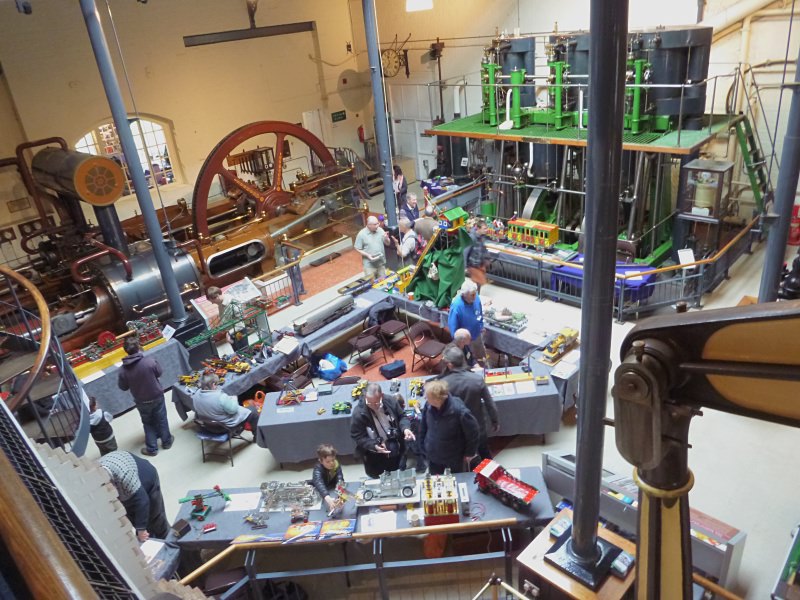
A view of the Steam Hall from the balcony
The Steam Hall has not changed, beyond some extra display panels about the engines, and this was where most of the Meccano was exhibited. More was in the upper gallery and the Boulton and Watt Hall, which have not changed. The biggest change was the Waterworks Gallery, in the basement, which has more items and display boards. This meant that there was no room for Meccano (with the exception of an Eiffel Tower).
The old cafe was now used to display models including a ‘Make it in Meccano’ section for children (and parents). Tea and biscuits were provided for exhibitors throughout the day. The latter were given badges and briefings held each morning.
Outside there were new hands-on activities for children (all involving water) and the narrow gauge railway.
I should recommend anyone to exhibit who can. It’s still a good venue, and cheaper than just visiting! On balance I would say there is slightly less room for models, so get in as soon as booking starts for next year. (A shame the organisers haven’t revived the marquee — I am sure it would pay for itself. Maybe the Meccano organisers could suggest this to the museum staff).
Many SELMEC members were exhibiting, also under the aegis of NELMC, Holy Trinity and Runnymede. It would have been nice if we’d had a SELMEC banner up, but I’m aware that someone’s got to get it there.
There were also several visitors from the club. I did say I was not including a roll call or list of models, all of which (some old and some new) were up to usual standards and gave Joe Public great pleasure and impressed them. One exception must be made. I will single out Jim McCulloch for his part in working with the organisers, stewarding and taking time to check the exhibitors were happy, which, on the whole, despite wrong trains, we were!
Bob Palmer’s Report
This was my first time exhibiting at this event having visited just once before, during the last Magic of Meccano event in 2012. Both then and now I came away feeling the need to go back for a fuller visit and spend more time looking at the museum’s own exhibits.
For this report I will concentrate on just a few models that caught my eye.
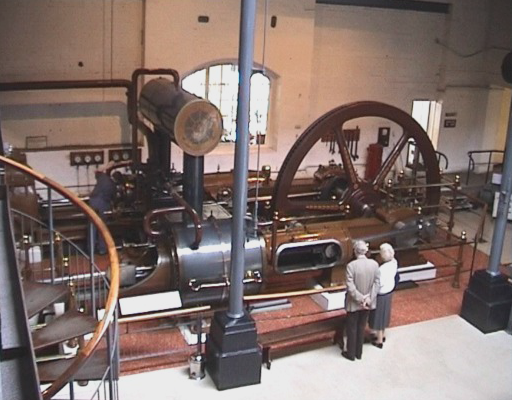
Spot the difference: One ‘Waddon’ steam pumping engine…
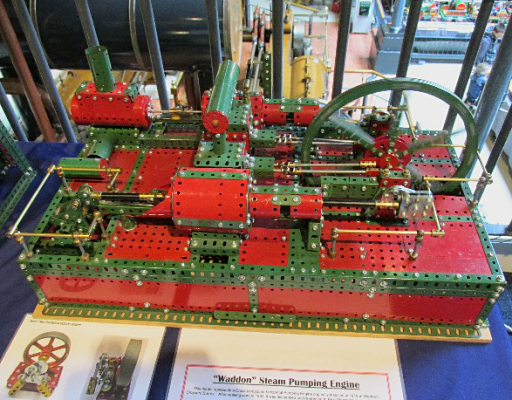
…and another
Firstly, in the main steam hall, where much of the Meccano was to found, there is the ‘Waddon’ Steam Pumping Engine — a cross-compound horizontal compound pumping engine which, according to its information board, was the last steam engine used for pumping water.
One visitor said to me “Wouldn’t that be a good model to build in Meccano?” So I sent him up to the gallery overlooking the Waddon, where Jim MacCulloch was displaying his very neat model which he says is a completely new version of one built by the late Phil Bradley in 1992. You can just see part of the prototype through the railings behind Jim’s model. Jim also had a number of his ‘signature’ miniature models, which he says are often harder to produce than the more typical larger Meccano models.

John Rogers’ model of the LNER Ten Thousand locomotive
Another fine model that has impressed me since I first saw it a year or two back is this fine rendition of the LNER Ten Thousand by John Rogers. This appeared in the January 1935 issue of Meccano Magazine and is largely based on an experimental high pressure locomotive built in 1929.
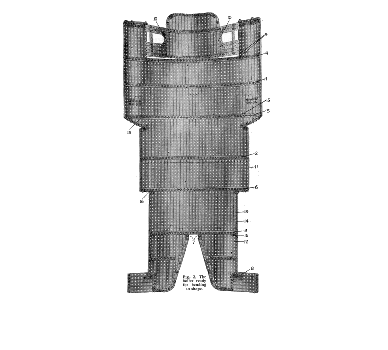
Constructing the main body
As you can see in the excerpt above, the Meccano Magazine article called for the builder to construct the main body in the flat and then roll it to shape — a very daunting task indeed! John chose to create a suitable framework with strips he had curved and then plate it with various lengths of strip as needed. The original model used large quantities of the less common strip lengths so John rearranged the plating to use more common lengths. He also improved on the cab detailing by using parts not available when the earlier model was built.
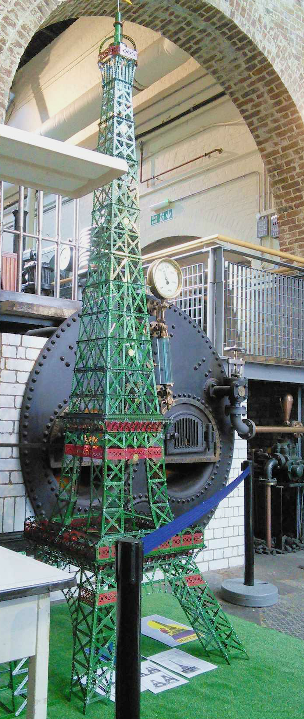
Gregg Worwood’s Eiffel Tower
One criticism I later heard regarding this event was that there were no really big models. Well, there was one over 12’ high and that was the Eiffel Tower by Gregg Worwood, which was the only model in the newly revamped Water Hall. This separates into four sections for transport.
His other model was also the longest on show and was Stephenson’s Rocket complete with tender, open carriage and closed carriage. He included as part of his display a lot of information about the prototype including an account of the first recorded railway accident, which involved one William Huskisson, MP for Liverpool, who later died from his injuries.
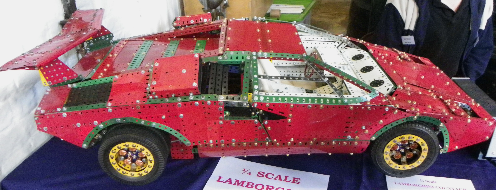
Pete Wood’s Lamborghini Countach
Pete Wood had along his ¼ scale Lamborghini Countach, which, while a work in progress, already incorporates several features from both the LP400 and LP500 versions. Current features includes a fully ‘working’ V12 engine (displayed separately) with moving pistons, valves and ‘firing’ spark plugs; working clutch and 5-speed gearbox which matches the LP500 ratios; rack and pinion steering; spring suspension; ‘leather’ adjustable seats; ‘working’ speedometer and tachometer. He intends to add lights, windows, windscreen wiper and, possibly, working brakes.
SELMEC members will hopefully recognise Chris Fry’s Cricket Pavilion. Originally built for the Model Village Secretary’s Challenge, it is expected to be part of a village display at the 2015 Meccano Show in Eltham.
Another part of the village scene is an East-End London Pub, called ‘The Bolt Hole’. This was one of a group of models by Cathy Claydon and John Gay.
Geoff Wright showed a trio of public transport vehicles: a Leyland ‘Titan’ TD1 Double Decker Bus, a UCC ‘Feltham’ Class Tramcar and an AEC Q Double Deck Bus. These were all built to a scale of 1:16 and solely from the parts contained in a mid 1950s № 9 set.
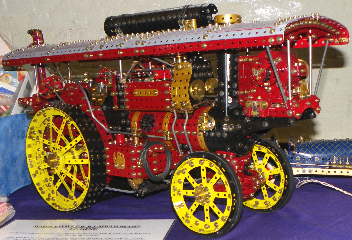
Darren Bonner’s R3 Showman’s Engine
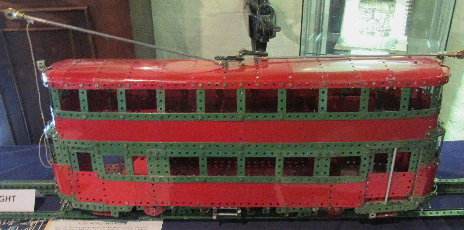
Geoff Wright’s UCC ‘Feltham’ Class Tramcar
Here we can see Darren Bonner’s fine model of a John Fowler R3 Showman’s Engine. Built almost entirely from refurbished Meccano, it has very few non-Meccano parts. Features include three speeds to the rear wheels, working winch and ‘feast’ crane at the rear; all driven by one motor. There are also working lights, working steering and a belt drive to the front dynamo.
Darren also showed his Wolseley WD11 1.5hp Stationary Engine. This is a very close copy of the 1940s prototype and is about ⅔ full size, built from 99% restored parts. Features include a working piston, governors, valves and magneto points. It is powered by a small 12V motor hidden inside.
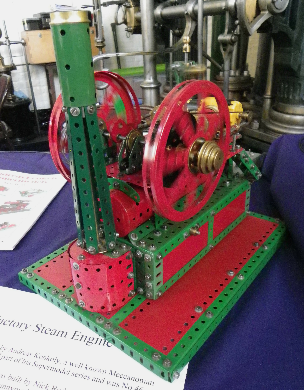
Nick Rodgers’ Factory Steam Engine
Nick Rodgers had a selection of models for us. One I do not recall seeing before is this Factory Steam Engine. It is based on a design by Andreas Konkoly — his Supermodel 46. Building instructions for this will appear in volume 8 of the Andreas Konkoly Supermodels books currently being published by the Runnymede Meccano Guild.
Also on Nick’s table were two versions of a 4-wheel drive chassis. The one in army green was built by John MacDonald and was awarded the Phil Bradley Memorial Trophy by the Holy Trinity Meccano Club in 2014. The red and green version is a close copy, built by Nick, for which full construction details will be available in the future.
These were just a few of the many models on display. I could easily fill several more pages but I hope you’ve enjoyed this little ‘taster’.
Why not join in next year?